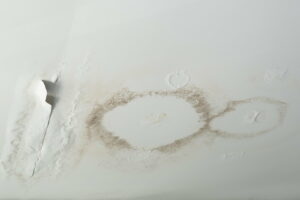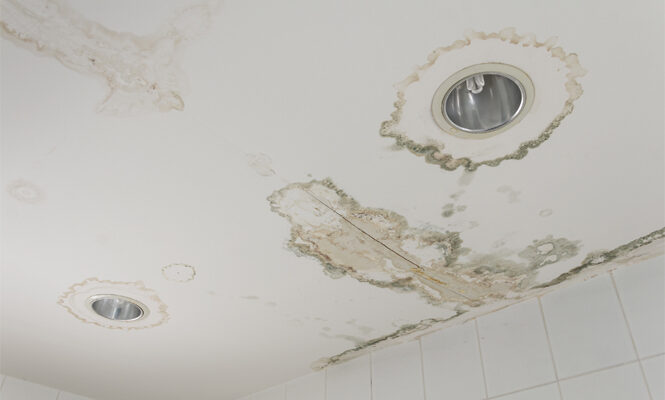Water Stain on Walls - Checking and Repair Tips
Water Stain on Walls - Checking and Repair Tips
Blog Article
This post down below relating to How to Remove Water Stains from Walls and Ceilings is highly engaging. You should see for yourself.

Water discolorations on wall surfaces are not enjoyable to the eyes. Sometimes it appears nearly unpreventable to experience water stains on walls in homes.
House owners living in damp areas frequently deal with the concern of water spots on walls. With precise and all-around information on the reasons of water spots and punctual repair work processes, you will certainly always be a step in advance of such incidents.
3 Common Sources Of Water Spots on Walls
Unlike common belief, water stains on wall surfaces do not constantly stem from inadequate building products. There are a number of causes of water discolorations on walls. These consist of:
Moist
When hot wet air consults with dry chilly air, it causes water droplets to form on the walls of structures. This occurs in bathroom and kitchens when there is heavy steam from food preparation or showers. The water droplets can stain the bordering walls in these parts of your house and infect other locations.
Damp or condensation influences the roofing as well as walls of structures. This causes them to show up darker than various other locations of the house. When the wall surface is wet, it creates an ideal environment for the development of microorganisms and also fungi. These might have unfavorable results on health, such as allergies as well as breathing conditions.
Poor Drain
This will avoid water from leaking into the walls. This links to excessive wetness that you discover on the walls of your building.
So, the leading root cause of damp wall surfaces, in this situation, can be a bad drain system. It can also be due to poor management of sewer pipelines that go through the building.
Pipe Leaks
A lot of houses have a network of pipes within the walls. This guarantees that the pipes are faraway from the reach of devastating rats. It always enhances the feasibility of such pipes, as there is little oxygen within the walls. This discourages corrosion.
A disadvantage to this is that water leakage affects the wall surfaces of the building and creates extensive damages. A telltale sign of defective pipes is the look of a water tarnish on the wall.
Pro Suggestion
A houseplant in your home also enhances its humidity. So, if your house is already humid, you might want to present houseplants with marginal transpiration. An instance of suitable houseplants is succulents.
Water Spots on Wall: Fixing Tips
House owners would typically desire a quick fix when taking care of water stains. They would certainly soon understand this is counterproductive as the water spots recur. Right here are a couple of handy suggestions that will lead you in the repair of water spots on wall surfaces:
Final thought
Although no person intends to have water discolorations on walls in their residence, it can happen to the best people. This article provides you take advantage of, as you currently recognize exactly how to handle this problem if it does take place.
It is constantly best to recruit specialist services to help repair the problems in your house.
Occasionally it appears virtually inevitable to experience water spots on wall surfaces in homes.
Contrary to preferred idea, water spots on walls do not constantly stem from inadequate building materials. There are several reasons of water spots on walls. The water beads can stain the surrounding walls in these components of your residence and also spread to other areas.
Below are a couple of helpful tips that will certainly lead you in the fixing of water spots on walls:
CHECKING FOR WATER DAMAGE
Water damage can be costly, and it may begin before you even notice the first signs of trouble. Water damage can cause mold and mildew in your walls and floors, which can create an abundance of health concerns for your family. It can also lead to costly repairs of various appliances and general home fixtures. To avoid the pricey consequences of water damage, here are Warner Service’s top 5 places you should check:
The walls – The easiest place to spot the beginnings of water damage is on the walls and ceilings of your home. If water damage is present, there will most likely be water stains, especially around the windows and doorframes, and/or cracks in the drywall. If a stain looks unusual (discolored to brown, black or gray, raised texture), has a swollen appearance or is soft to the touch, contact a professional immediately. The pipes – To avoid water damage, consistently check the pipes in your kitchen (especially the dishwasher and ice maker), bathrooms, laundry room (specifically washing machines) and basement for corrosion, leaks and water stains. Pay special attention to where the pipes connect in your home and the location of caulking around the bathroom fixtures, including toilets, sinks, showers and tubs. Missing or loose caulking and grout could be signs of leaking water. This seepage can also quickly cause mold and rust, so double check your water heater and tank for wet spots on the floor. The floor – Water damage is very easy to spot on the floor. Look for any warping or buckling of the material, especially in the basement. If your home has wood flooring, look for bright white or dark stains. If your home has carpeting, keep it dry and clean. A damp carpet that smells of mold could cause water damage and health problems. To avoid this, consider installing floor pans under your appliances to help prevent damages from small, slow and undetected leaks. The basement and attic – If your basement or attic smells odd check for mold and mildew around the area, especially the valley where the roof meets. While you are inspecting those areas, check for wall cracks, floor stains, rust and dampness in the insulation. If you live in a colder and/or rainier climate, perform routine checks for water damage from melting snow or ice and rain. The exterior – Check the roof for damaged flashing and missing, cracked or curled shingles. There should also be no standing water anywhere outside your home. This could be caused by puddles, leaky rain gutters or hoses, poor drainage, or short gutter spouts. Invest in a sump pump system or water flow monitoring system, and perform routine maintenance on these outdoor appliances to avoid indoor water damage.

I ran across that page on when scouting around the web. If you enjoyed reading our article plz make sure you remember to pass it around. Many thanks for taking the time to read it.
Call for peace of mind! Report this page